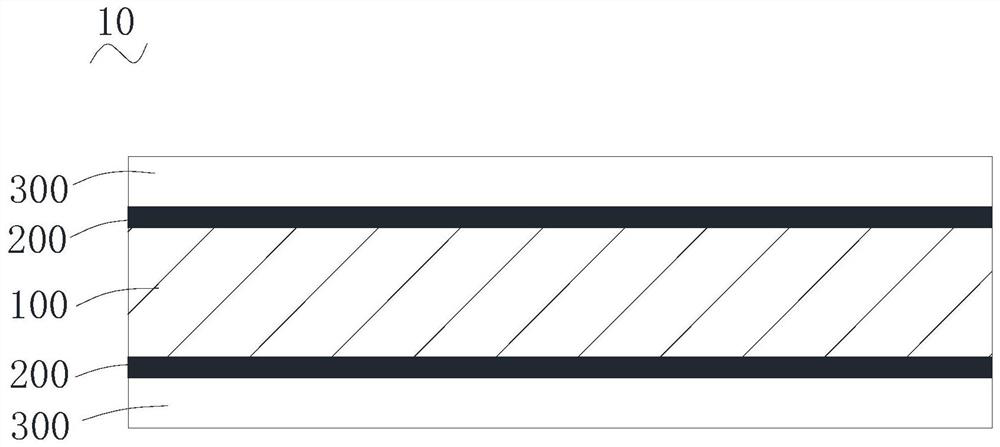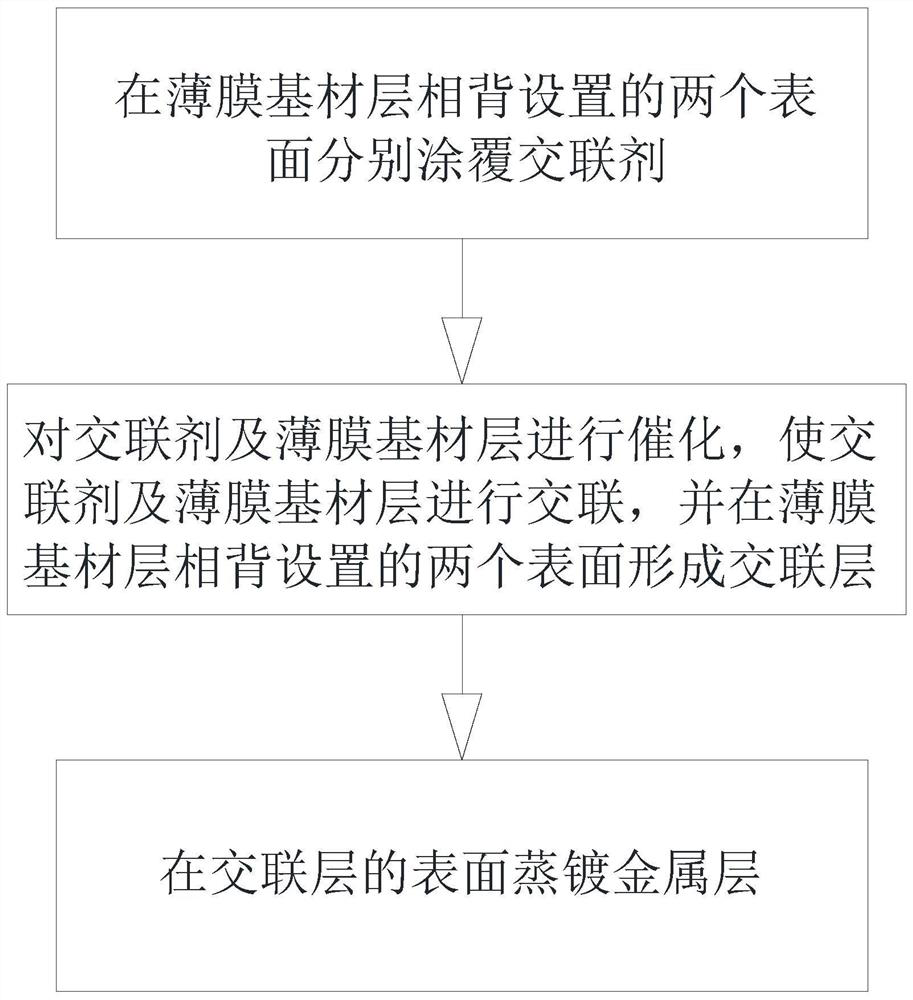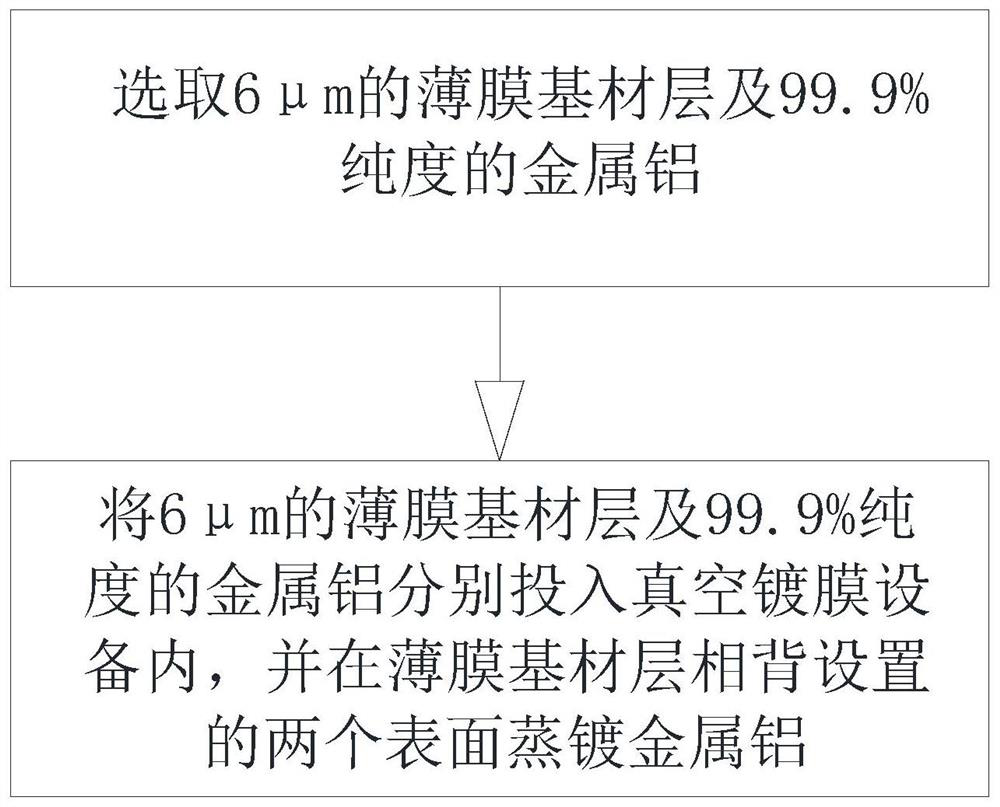Low-swelling composite current collector and preparation method thereof
A current collector and low-swelling technology, applied in secondary battery manufacturing, electrode carrier/current collector, etc., can solve problems such as increased electrolyte viscosity, poor peeling force, and peeling off of the metal layer and film substrate layer
- Summary
- Abstract
- Description
- Claims
- Application Information
AI Technical Summary
Problems solved by technology
Method used
Image
Examples
Embodiment
[0052] The present disclosure is more specifically described by the following examples, which are intended to be illustrative only, since various modifications and changes within the scope of the present disclosure will be apparent to those skilled in the art. Unless otherwise stated, all parts, percentages, and ratios reported in the following examples are on a weight basis, and all reagents used in the examples are either commercially available or synthesized according to conventional methods, and can be directly Used without further processing, and the instruments used in the examples are commercially available.
[0053] see figure 2 , Embodiment 1 of the present application also provides a method for preparing a low-swelling composite current collector 10, comprising the following steps:
[0054] Step 1: Coating a crosslinking agent on the two surfaces of the film substrate layer 100 opposite to each other respectively.
[0055] Wherein, in this embodiment, the thicknes...
Embodiment 2
[0063] The difference between this embodiment and Embodiment 1 is that the thickness of the crosslinking agent applied to the film base material layer 100 is 0.4 μm, and the thickness of the film base material layer 100 is 25 μm. The thickness of the metal layer 300 is 2.5 μm, and the metal layer 300 is a metal copper layer. The method of catalyzing the crosslinking agent and the thin film substrate layer 100 adopts ultraviolet light irradiation. The temperature at which the crosslinking agent and the film base layer 100 are crosslinked is 200°C. The time for the cross-linking agent and the film base layer 100 to be cross-linked is 50 s.
Embodiment 3
[0065] The difference between this embodiment and Embodiment 1 is that the thickness of the crosslinking agent applied to the film base material layer 100 is 0.2 μm, and the thickness of the film base material layer 100 is 1 μm. The thickness of the metal layer 300 is 0.1 μm, and the metal layer 300 is a metal aluminum layer. The method of catalyzing the crosslinking agent and the thin film substrate layer 100 adopts ultraviolet light irradiation. The temperature at which the crosslinking agent and the film base layer 100 are crosslinked is 50°C. The time for the cross-linking agent and the film base layer 100 to be cross-linked is 30 s.
PUM
| Property | Measurement | Unit |
|---|---|---|
| Thickness range | aaaaa | aaaaa |
| Thickness | aaaaa | aaaaa |
| Thickness | aaaaa | aaaaa |
Abstract
Description
Claims
Application Information
 Login to View More
Login to View More - R&D
- Intellectual Property
- Life Sciences
- Materials
- Tech Scout
- Unparalleled Data Quality
- Higher Quality Content
- 60% Fewer Hallucinations
Browse by: Latest US Patents, China's latest patents, Technical Efficacy Thesaurus, Application Domain, Technology Topic, Popular Technical Reports.
© 2025 PatSnap. All rights reserved.Legal|Privacy policy|Modern Slavery Act Transparency Statement|Sitemap|About US| Contact US: help@patsnap.com



